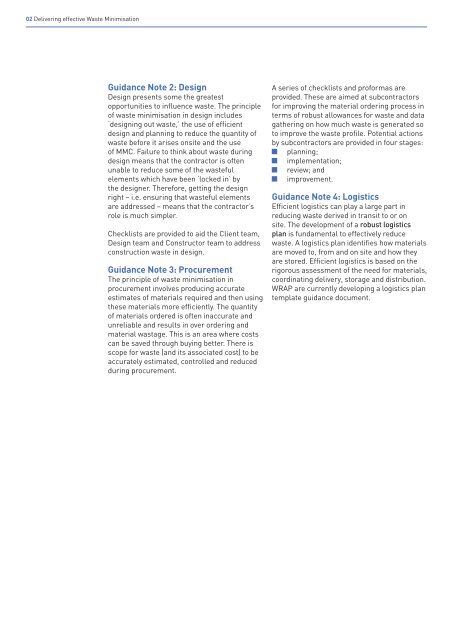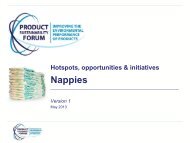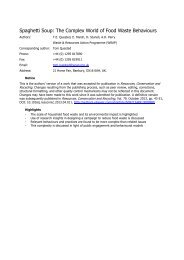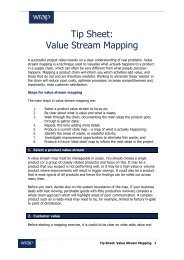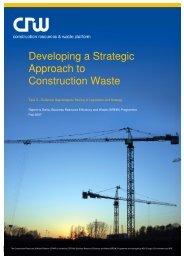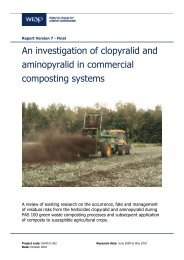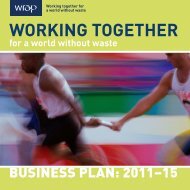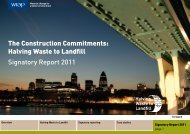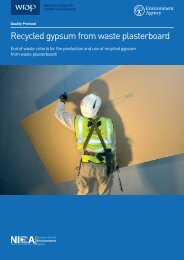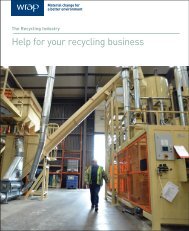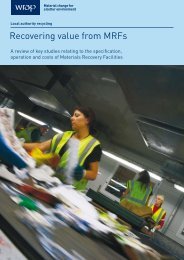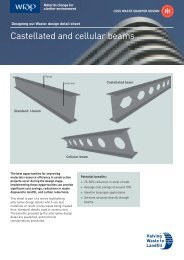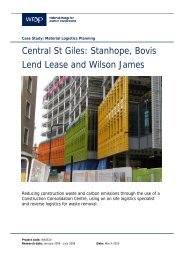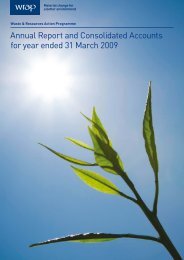Delivering effective Waste Minimisation - Wrap
Delivering effective Waste Minimisation - Wrap
Delivering effective Waste Minimisation - Wrap
You also want an ePaper? Increase the reach of your titles
YUMPU automatically turns print PDFs into web optimized ePapers that Google loves.
02 <strong>Delivering</strong> <strong>effective</strong> <strong>Waste</strong> <strong>Minimisation</strong><br />
Guidance Note 2: Design<br />
Design presents some the greatest<br />
opportunities to influence waste. The principle<br />
of waste minimisation in design includes<br />
‘designing out waste,’ the use of efficient<br />
design and planning to reduce the quantity of<br />
waste before it arises onsite and the use<br />
of MMC. Failure to think about waste during<br />
design means that the contractor is often<br />
unable to reduce some of the wasteful<br />
elements which have been ‘locked in’ by<br />
the designer. Therefore, getting the design<br />
right – i.e. ensuring that wasteful elements<br />
are addressed – means that the contractor’s<br />
role is much simpler.<br />
Checklists are provided to aid the Client team,<br />
Design team and Constructor team to address<br />
construction waste in design.<br />
Guidance Note 3: Procurement<br />
The principle of waste minimisation in<br />
procurement involves producing accurate<br />
estimates of materials required and then using<br />
these materials more efficiently. The quantity<br />
of materials ordered is often inaccurate and<br />
unreliable and results in over ordering and<br />
material wastage. This is an area where costs<br />
can be saved through buying better. There is<br />
scope for waste (and its associated cost) to be<br />
accurately estimated, controlled and reduced<br />
during procurement.<br />
A series of checklists and proformas are<br />
provided. These are aimed at subcontractors<br />
for improving the material ordering process in<br />
terms of robust allowances for waste and data<br />
gathering on how much waste is generated so<br />
to improve the waste profile. Potential actions<br />
by subcontractors are provided in four stages:<br />
planning;<br />
implementation;<br />
review; and<br />
improvement.<br />
Guidance Note 4: Logistics<br />
Efficient logistics can play a large part in<br />
reducing waste derived in transit to or on<br />
site. The development of a robust logistics<br />
plan is fundamental to <strong>effective</strong>ly reduce<br />
waste. A logistics plan identifies how materials<br />
are moved to, from and on site and how they<br />
are stored. Efficient logistics is based on the<br />
rigorous assessment of the need for materials,<br />
coordinating delivery, storage and distribution.<br />
WRAP are currently developing a logistics plan<br />
template guidance document.


